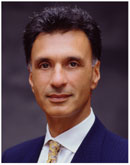How and why did you decide to start Baltic Fund 1?
Essentially, when the three Baltic states regained their independence in 1991, we saw an opportunity whereby investors could both take advantage of very low asset valuation and look forward to rapidly developing economies. Our optimism was based in part on the countries’ highly educated but inexpensive work force, their historically strategic location for East-West trade, and the fact that they had been on an economic par with Norway and Finland between the wars. So we started a fund to attract investors there.
One of the largest obstacles to attracting investors in the beginning was the continued presence of Russian soldiers in the Baltic countries. However, as soon as the troops left in August 1994, one of the groups we had been approaching, Rockefeller and Company, signed on, along with Lazard Freres. Later on, our third major investor, the Al-Ibrahim family of Saudi Arabia, joined. Within a total of nine months, we were fully invested - a feat many emerging-market managers and gurus in London and New York said could not be done.
Our plan for the future is to continue to seek opportunities for the fund. Unlike the situation in Russia, we believe the Baltics present little downside risk but very attractive upside potential.
Which Baltic industries offer the greatest opportunities for returns?
Clearly, the financial services sector has been a winner. The wood-processing industry is another attractive area. I also think East-West trade has much potential the whole concept of the Baltics’ being the Hong Kong of Russia. The tourist business should do quite well too.
What about political risk in these countries?
I was at the White House in January when the presidents of the three Baltic states and President Clinton signed the U.S-Baltic Charter. The charter states the common goal of the four countries is for the Baltics to integrate into western institutions, including recognition of the Baltics’ aspirations to join NATO.
Underpinning the Baltics’ political systems is a popular consensus in favor of pro-growth policies. Which is why, in all three countries, you have budgets that are balanced or very nearly so; stable, convertible currencies; and trade that is fairly free, if not completely. The people themselves advocate these things. So even though there may be the appearance of political instability, with leadership moving from one party to another, the politicians all follow the same policies.
Have you been pleased with the awareness around the world of these opportunities in the Baltics?
When we first mentioned the Baltics, people responded: “What? Where?” So we had a difficult time, as I said, until the Russian soldiers left. Today almost every emerging-market manager knows about the Baltics and understands they’re a success story. There has been a big difference in perception in the last three years alone. But the Baltics continue to be small markets for most emerging-market funds. You tend to see much more direct foreign investment there. This is coming from the United States, Canada, Germany, the Scandinavian countries, Finland, even Russia.
Where is Baltic Fund 1 managed?
Baltic Management, which manages the fund’s assets, is a U.S.-registered company with headquarters in New York State, but it maintains offices in Tallinn, Riga, Vilnius, and London. We believe we’ve hired some of the best local analysts to assess projects and help us find new opportunities. And I personally spend seven months each year in the Baltics, keeping a very close eye on our investments.
What are your future goals for the fund?
Well, since we’re fully invested now, we would like to create other funds to take advantage of the opportunities that continue to come up in the Baltics. And we hope that the rate of return we offer will continue to be very high, compared to that paid by other emerging-market funds.
Editor’s Note
Earlier this decade Hamid Ladjevardi and his associates sighted a new source of investment opportunities: recently liberated Estonia, Latvia, and Lithuania. After meeting with initial resistance, they eventually attracted three powerhouse investors, and since then their Baltic Fund 1 has reaped substantial rewards. Ladjevardi, the managing partner, reports that this fund has been fully invested since 1996, yet still believing that the Baltics “present little downside risk but very attractive upside potential,” he anticipates creating others “to take advantage of the opportunities that continue to come up.” Before launching Baltic Fund 1, Ladjevardi spent 12 years with Morgan Stanley as an asset manager.
COMPANY BRIEF New York, NY-based Baltic Fund 1, L.P., is a private equity fund mandated to invest exclusively in Estonia, Latvia, and Lithuania. A U.S.-registered limited partnership listed on the Dublin Stock Exchange, it has net assets in excess of $33 million and investments that range in estimated value from $500,000 to $3 million.


